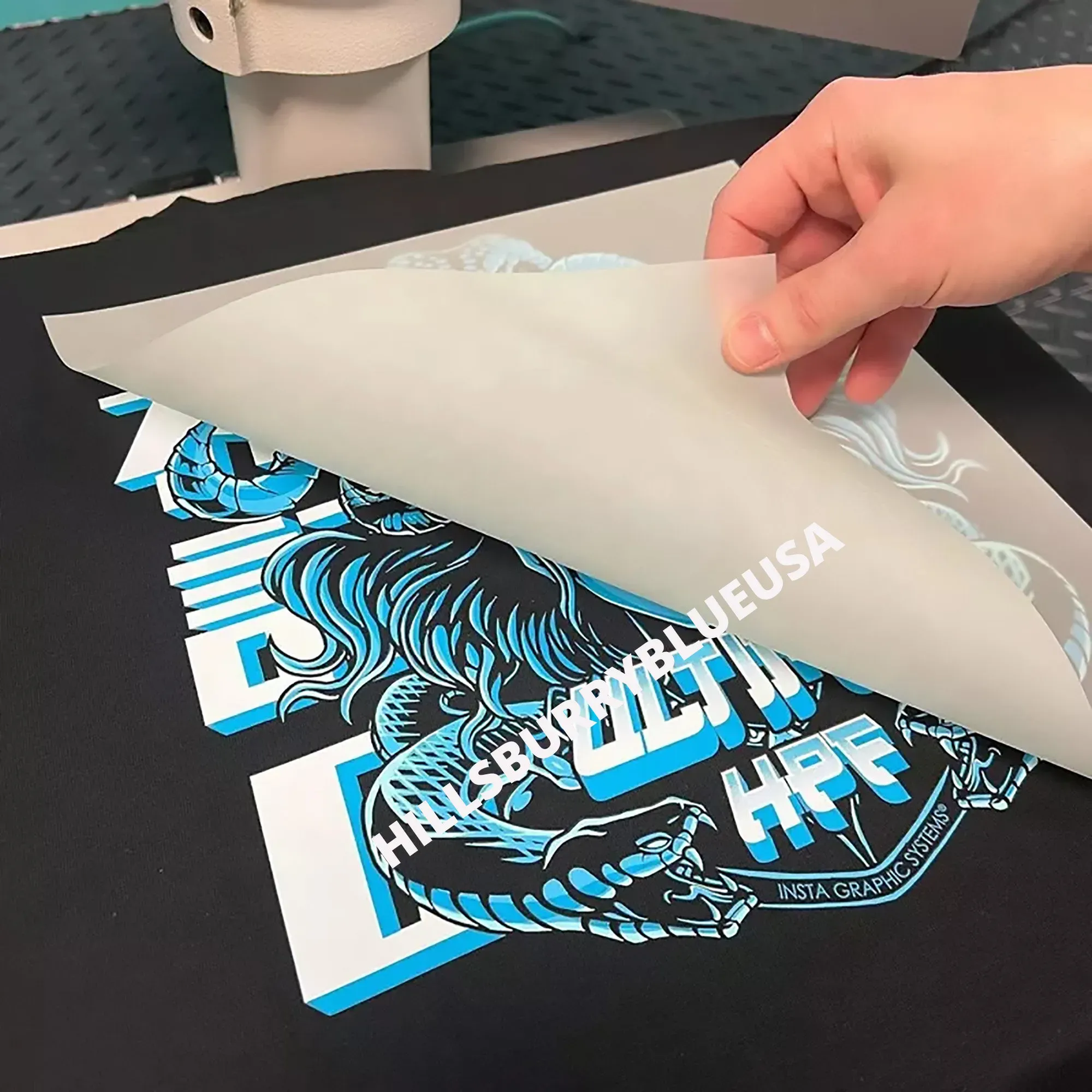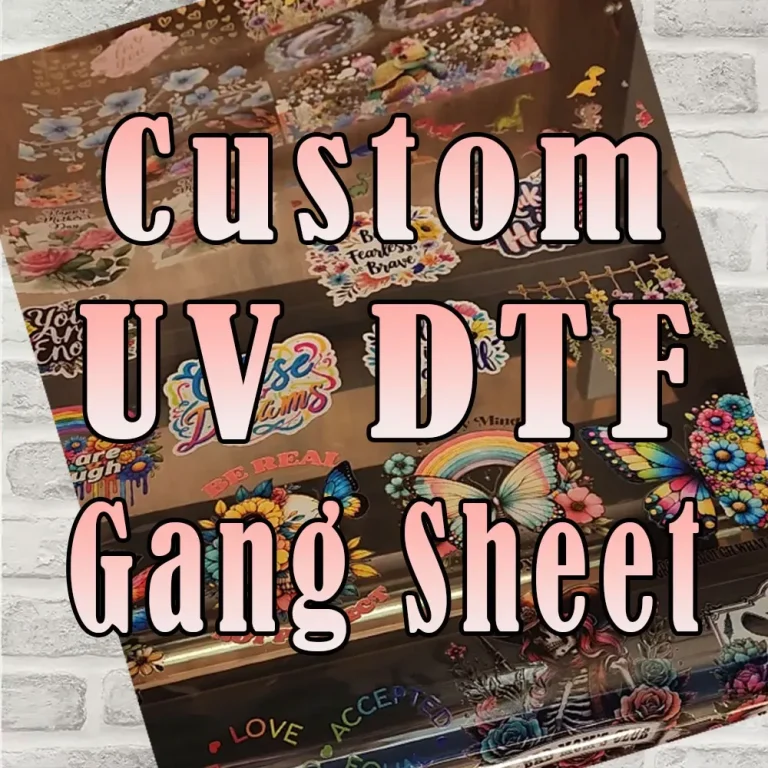DTF Transfers: Essential Tips, Tricks & Techniques Explained
In the realm of innovative apparel decoration, DTF transfers, or Direct-to-Film transfers, have captured the attention of designers and crafters alike. This cutting-edge technique allows for the seamless transfer of eye-catching designs onto various fabrics, providing an easy way to enhance clothing with vibrant graphics. Throughout this guide, we will delve into the essentials of DTF transfers, sharing valuable tips, tricks, and techniques that ensure high-quality results for every project. From understanding the DTF printing process to exploring the necessary equipment, our aim is to equip you with the knowledge needed to master this remarkable method. Whether you’re a seasoned professional or just starting out, DTF transfers offer a landscape of possibilities for your creative ventures.
In today’s fashion and custom apparel landscape, one of the most talked-about methods is Direct-to-Film (DTF) printing, a state-of-the-art approach to transferring images onto textiles. This process, also referred to as film transfer printing, merges traditional and modern printing techniques to produce stunning and durable fabric designs. DTF printing techniques are not only versatile and cost-effective but also user-friendly, making them ideal for small businesses and DIY enthusiasts alike. With its increasing popularity, understanding the nuances of DTF transfers can significantly enhance your apparel design projects. You’ll discover essential DTF transfer tips and gain insights into optimal application practices, ensuring that your creations stand out with colorful precision.
Understanding Direct-to-Film (DTF) Printing
Direct-to-Film (DTF) printing offers a modern solution for graphic designers and hobbyists aiming to create intricate designs on various fabrics. Unlike traditional methods, DTF utilizes specialized inks and films that ensure vibrant colors and sharp edges. This innovative technique not only simplifies the transfer process but also enhances the durability of the prints, making them resistant to fading and wear. As we delve into the specifics of DTF, it is essential to recognize how this method outshines conventional printing techniques.
The DTF printing process begins with the precision printing of an image onto a transfer film. A heat-reactive adhesive powder is then applied to the wet ink, before the film is fused to the fabric using a heat press. This sequence not only supports the integrity of the design but also allows for greater efficiency, especially in fulfilling larger orders without compromising quality. By harnessing the technological advancements of DTF, creators can achieve results that align with professional standards, all while enjoying the flexibility this technique provides.
The DTF Printing Process Explained
The DTF printing process involves several critical steps that ensure a successful transfer and high-quality finish. Initially, artists should meticulously prepare their workspace to keep the transfer film clean from dust or contaminants that could affect print results. Following this, it’s vital to optimize the printer settings to achieve maximal vibrancy and clarity. Special attention should be given to ensure that the ink adheres perfectly to the film before proceeding to the next step.
Once the design is printed, the application of the adhesive powder becomes a crucial factor in the process. Sprinkling the adhesive while the ink is still warm promotes a solid bond that later withstands heat application during the pressing phase. The actual heat pressing stage demands careful consideration of temperature and pressure settings, which can vary based on the type of fabric. Proper cooling time after pressing is equally important for a flawless finish, which ultimately brings out the best in your DTF designs.
Key Equipment for DTF Transfers
Selecting the right equipment for DTF transfers can significantly influence the outcomes of your apparel decoration projects. The two most essential tools are a DTF printer and a heat press. When considering printers, ensure that you choose models tailored specifically for DTF printing or modify existing inkjet printers with DTF-compatible inks. Brands like Epson and Brother are renowned for providing reliable printers that facilitate vibrant print quality, allowing you to express your creativity efficiently.
Beyond the printer, a quality heat press is paramount for achieving the desired results with DTF transfers. The heat press should be capable of reaching temperatures between 270°F and 320°F, which is critical for melting the adhesive powder effectively. Additionally, selecting the right DTF films and adhesive powders is crucial, as these materials determine the adherence and finish of your designs. Investing in quality equipment not only ensures professional results but also enhances the overall efficiency of your DTF projects.
Advantages of DTF Transfers for Apparel Decoration
DTF transfers provide a myriad of advantages that make them a preferred choice in the world of apparel decoration. Notably, their versatility allows for application on various fabrics, including cotton, polyester, and blends, making them ideal for projects ranging from t-shirts and hoodies to bags. This adaptability ensures that designers can expand their creative horizons, customizing a wide range of items without restrictions.
Moreover, DTF transfers are celebrated for their cost-effectiveness, particularly when it comes to smaller production runs. They minimize material waste and resource consumption while delivering high-impact visuals that stand the test of time. Users also appreciate the durability of DTF prints, which maintain their vibrancy and structural integrity over multiple washes, ensuring that garments remain visually appealing and functional for extended periods.
Tips for Successful DTF Transfers
To achieve exceptional results with DTF transfers, it’s crucial to follow some best practices. First, ensure that your transfer film remains free from dust or grease before printing, as these contaminants can lead to unanticipated blemishes on your final product. Additionally, regular calibration of your printer helps maintain consistent ink flow, which is vital for producing vibrant and accurately colored designs.
Experimenting with different temperature and pressure settings during the heat pressing stage is essential to find an optimal combination for your specific materials. Conduct tests with excess film to perfect these settings before attempting final transfers. Allowing your completed transfers to cool adequately before peeling off the film can significantly enhance the design’s longevity and aesthetic appeal.
Common Challenges in DTF Transfers and Solutions
As with any printing method, DTF transfers come with their own set of challenges that users may face. One such issue is adhesion problems where the design may not adhere properly to the fabric, leading to peeling or flaking. To combat this, double-checking your heat and pressure settings is essential. Ensuring that the printer is set to an adequate temperature can reduce the likelihood of such issues, therefore enhancing the overall quality of the transfer.
Another common challenge is ink smudging, which can occur due to inadequate curing of the adhesive powder. To avoid this, ensure that your printer temperature aligns with the specifications for your DTF materials. If issues persist, consider re-evaluating the ink quality and the film being used, as some may be more prone to smudging based on their formulation. By identifying and addressing these challenges proactively, you can achieve stunning, high-quality DTF transfers every time.
Frequently Asked Questions
What are DTF transfers and how do they work?
**DTF transfers**, or Direct-to-Film transfers, are a modern printing method that involves printing designs onto a special film using DTF ink. After printing, adhesive powder is added and cured with heat to bond the design to fabric. This technique is known for its vibrant colors and durability, making it popular for apparel decoration.
What equipment do I need for DTF printing?
To get started with **DTF printing**, you will need a DTF printer, a high-quality heat press capable of reaching temperatures between 270°F to 320°F, DTF films, and adhesive powders. Ensuring you have the right equipment is crucial for achieving professional-quality transfers.
What are some essential tips for successful DTF transfers?
For successful **DTF transfers**, clean your film before printing, regularly calibrate your printer for color accuracy, conduct tests with heat and pressure settings, and allow sufficient cooling time before peeling the film. Following these **DTF transfer tips** will enhance the quality of your designs.
How do DTF transfers compare to traditional heat transfer vinyl?
Unlike traditional heat transfer vinyl, **DTF transfers** allow for detailed and colorful designs without the need for weeding excess material. DTF printing is versatile and can be applied to various fabric types, offering a more cost-effective solution for smaller production runs compared to heat transfer vinyl.
What common challenges can occur with DTF printing and how can I solve them?
Common challenges with **DTF printing** include adhesion problems and ink smudging. To solve adhesion issues, ensure you are using the correct heat and pressure settings. For smudging, check that your printer’s temperature is adequate, as insufficient heat can lead to inadequate ink curing.
What future trends can we expect in DTF transfers?
Future trends in **DTF transfers** may include eco-friendly innovations, such as the use of sustainable inks and materials. Additionally, the integration of AI technologies into printing processes is expected to provide smarter and more efficient solutions, enhancing the DTF printing experience.
| Key Points | Details |
|---|---|
| What is DTF Printing? | A modern printing method combining traditional techniques with technology to create colorful, durable prints on fabric. |
| DTF Printing Process | 1. Preparation – Clean workspace. 2. Printing the Design – Use a compatible printer. 3. Applying Adhesive Powder – Sprinkle while ink is hot. 4. Heat Pressing – Transfer design with heat and pressure. 5. Peeling the Film – Remove film after cooling. |
| Essential Equipment for DTF Transfers | – DTF Printer: Specialized or modified inkjet printers. – Heat Press: Machine capable of high temperatures (270°F – 320°F). – DTF Films and Adhesive Powder: Materials designed for DTF processes. |
| Advantages of Using DTF Transfers | 1. Versatility – Can be applied to various fabrics. 2. Cost-Effectiveness – Budget-friendly for small runs. 3. Durable Results – Resistant to fading and cracking. |
| Tips for Successful DTF Transfers | – Clean Film – Remove dust or grease. – Printer Calibration – Regularly check for accuracy. – Temperature and Pressure Settings – Test to find optimal settings. – Cooling Time – Allow cooling before peeling. |
| Common Challenges and Solutions | – Adhesion Problems – Check heat and pressure settings. – Ink Smudging – Ensure adequate printing temperature. |
| Future Trends in DTF Transfers | – Eco-Friendly Innovations – Focus on sustainable materials. – AI Integration – Smarter, efficient printing solutions. |
Summary
DTF transfers are transforming the landscape of apparel decoration by providing an innovative and efficient method for transferring brilliant designs onto fabric. This process not only simplifies image application but also enhances the durability and vibrancy of prints. As the industry progresses, staying informed about the latest trends, tips for successful implementation, and the right equipment can empower both beginners and professionals to excel in their fabric design endeavors. Embracing DTF transfers opens up exciting possibilities for creativity and expression in the world of textiles.





